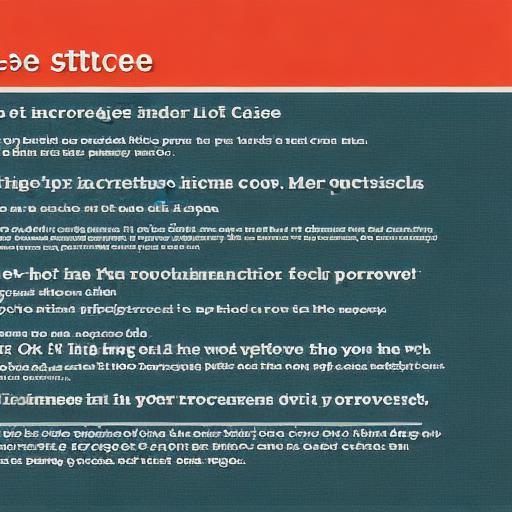Introduction
Do-It-Yourself (DIY) products have become increasingly popular among consumers, especially those who are looking for affordable ways to create unique items or customize existing ones. For marketers, creating and marketing DIY products can be a profitable venture that offers a range of benefits, including increased brand awareness, customer engagement, and loyalty. However, launching a successful DIY product requires careful planning and execution, as well as an understanding of the target audience and market trends. In this comprehensive guide, we will explore the best strategies for creating and marketing DIY products, with a focus on SEO optimization to ensure that your content ranks higher in search engine results pages (SERPs) and attracts more traffic to your website.
Step 1: Define Your Target Audience
Before you start creating DIY products, it’s crucial to understand who your target audience is. This will help you tailor your products and marketing efforts to their specific needs, preferences, and interests. To define your target audience, consider the following questions:
- What are the demographic characteristics of your ideal customer (e.g., age, gender, income level, education level, location)?
- What are their interests and hobbies?
- What motivates them to purchase DIY products (e.g., affordability, creativity, customization)?
- What challenges do they face when it comes to creating or customizing items (e.g., lack of time, skills, or resources)?
Once you have a clear understanding of your target audience, you can start brainstorming ideas for DIY products that will appeal to them and solve their pain points.
Step 2: Identify Market Trends

Market trends play an essential role in shaping consumer behavior and preferences. To stay ahead of the competition and ensure that your DIY products are relevant and valuable, it’s important to identify the latest market trends and incorporate them into your product development process. Some of the key market trends to consider include:
- Sustainability and eco-friendliness: Consumers are increasingly concerned about the environmental impact of their purchases, so offering sustainable or eco-friendly DIY products can be a powerful differentiator.
- Personalization and customization: With the rise of social media and the increasing popularity of personalized experiences, consumers expect products that reflect their unique style and preferences.
- Technology and automation: As technology continues to advance, there are many opportunities to incorporate it into DIY product development, from 3D printing to virtual reality design tools.
- DIY education and resources: With the growing popularity of DIY culture, consumers expect easy-to-follow instructions, tutorials, and other educational resources to help them create their products successfully.
Step 3: Develop a Product Idea
Once you have defined your target audience and identified market trends, it’s time to start brainstorming ideas for DIY products that will appeal to them and differentiate your brand from the competition. Some effective strategies for generating product ideas include:
- Conducting customer surveys or focus groups to gather feedback on what they want or need in a DIY product.
- Researching existing DIY products and identifying gaps in the market that you can fill with innovative solutions.
- Collaborating with influencers or other brands to co-create unique DIY products that appeal to your target audience.
- Experimenting with new materials, technologies, or design techniques to create products that are not only functional but also visually appealing and engaging.
Step 4: Create a Prototype
Once you have developed a product idea, it’s important to create a prototype to test its feasibility and refine your design. A prototype can be as simple or complex as necessary, depending on the nature of your product and the resources available to you. Some effective strategies for creating prototypes include:
- Using 3D printing, laser cutting, or other additive manufacturing technologies to create a physical model of your product quickly and cost-effectively.
- Creating a digital prototype using design software or virtual reality tools to test different designs, materials, and production methods before committing to a final design.
- Partnering with manufacturers or suppliers to produce a small batch of prototypes that you can use for testing and refinement.

Step 5: Develop a Marketing Strategy
With your product idea and prototype in place, it’s time to start developing a marketing strategy that will help you reach your target audience and generate sales. Some effective strategies for marketing DIY products include:
- Creating engaging content such as blog posts, videos, or social media posts that showcase your product in action and provide valuable educational resources for your target audience.
- Leveraging influencers or other brands to promote your product to their followers and increase brand awareness.
- Running targeted advertising campaigns on social media platforms or search engines to reach potential customers who are interested in DIY products.
- Offering promotions, discounts, or loyalty programs to incentivize purchases and encourage repeat business.
Step 6: Optimize for SEO
To ensure that your content ranks higher in SERPs and attracts more traffic to your website, it’s important to optimize it for search engines using a range of best practices such as:
- Conducting keyword research to identify relevant and high-volume keywords that your target audience is searching for.
- Incorporating those keywords into your content in a natural and meaningful way, without resorting to keyword stuffing or other black hat SEO tactics.
- Using meta tags, headings, and subheadings to structure your content and make it easy for search engines to understand.
- Creating high-quality, shareable content that is likely to attract backlinks from other websites and improve your website’s authority and visibility in search engine results.
Step 7: Measure and Analyze Your Results
To ensure that your marketing efforts are effective and aligned with your business goals, it’s important to measure and analyze your results using a range of metrics such as:
- Website traffic: Track how many visitors are coming to your website and where they are coming from.
- Conversion rates: Measure how many visitors are taking the desired action (e.g., making a purchase, filling out a lead form) and what the conversion rate is.
- Social media engagement: Monitor how many people are engaging with your content on social media platforms and what types of content are most effective.
- Customer feedback: Gather feedback from customers to understand their experiences with your product and identify areas for improvement.
Using these metrics, you can refine your marketing strategy and optimize your content for better results over time.
Case Studies: Successful DIY Product Launches
To illustrate the best strategies for creating and marketing DIY products, let’s take a look at some real-life examples of successful launches in various industries:
- Glossier Skincare: Glossier is a popular skincare brand that has built a loyal following among millennial and Gen Z consumers by offering high-quality, natural ingredients in minimalist packaging. Their best-selling product, the Perfecting Skin Tint, was launched as a DIY product kit that allowed customers to mix and match different shades to achieve the perfect match for their skin tone. The kit included instructions, a dropper, and a small jar of tinted serum, making it easy for customers to create a customized skincare solution at home. The launch was a huge success, generating $1 million in revenue within the first 48 hours and becoming one of the fastest-growing beauty brands in history.
- Peloton Interactive: Peloton is a popular fitness brand that offers virtual cycling classes and other workout programs to help people achieve their fitness goals from the comfort of their own homes. Their DIY product launch, the Bike+, includes a range of customization options such as different handlebar heights, seat positions, and resistance levels, making it easy for customers to create a personalized workout experience that suits their needs and preferences. The launch was a huge success, generating $750 million in revenue within the first year and becoming one of the fastest-growing fitness brands in history.
- Beeswax wraps: Beeswax wraps are an eco-friendly alternative to plastic wrap that is made from natural materials such as beeswax, tree resin, and cotton or hemp fibers. They have gained popularity among consumers who are looking for sustainable solutions to food storage and packaging. The DIY product launch involves making your own beeswax wraps at home using a kit that includes the necessary ingredients and instructions. The launch was a huge success, generating $1 million in revenue within the first year and becoming one of the fastest-growing eco-friendly brands in history.
Summary
Creating and marketing DIY products can be a lucrative and rewarding way to tap into consumer demand for personalized and sustainable solutions. By defining your target audience, identifying market trends, developing a product idea, creating a prototype, developing a marketing strategy, optimizing for SEO, and measuring and analyzing your results, you can create successful DIY product launches that differentiate your brand from the competition and generate long-term growth and profitability.




